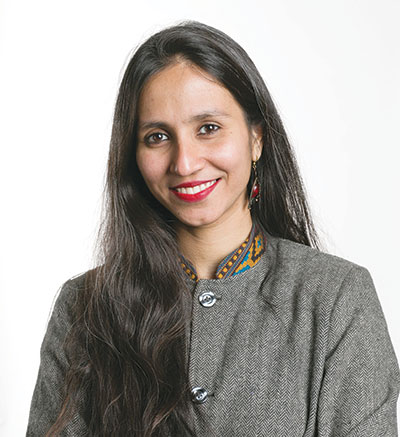
One way to achieve this is by venturing outside classrooms and teaching in informal settings — in museums and vibrant environments such as heritage sites, art galleries, science centres, archaeological sites, bio-diversity parks and gardens (hereafter collectively referred to as museums).
Learning in museums makes classroom subjects come alive. Imagine reading about animals, birds and reptiles in class and then studying their fossils, skulls and specimens to better understand their features, habitats and diets. Or examining coins, manuscripts, maps and understanding first-hand how history has been constructed using objects and texts and what they tell us about our past. In museum environments, students have the opportunity to apply words and phrases learned in classrooms — a fantastic example of authentic use of language in real settings. Learning in museums facilitates deeper conceptual understanding by enhancing students’ sensory literacy — absorption of information through the senses of sight, touch, hearing, smell, and taste. That’s why a rising number of museums offer special ‘objects handling’ spaces where children can touch, hold and explore real or replicas of display objects.
In recent years, it has become fairly well-established that museum learning offers gains beyond supplementing curriculum objectives. Objects-based learning stimulates and develops curiosity and capacity for children to make careful, insightful and critical observations. These skills are the basis of good research and have wide application in professions ranging from medicine to law to natural sciences. Another important outcome of the museum medium is that it develops students’ ability to make interdisciplinary connections between concepts and ideas beyond the confines of curriculum subjects. This helps to build lateral thinking and problem-solving skills.
The huge proven benefits of museum learning explains why the Langley Academy, Berkshire (UK) has transformed itself into a full-fledged museum learning school. Learning here isn’t confined to day trips to museums; instead, real objects and exhibits are brought into the school for students to examine and experience. At the Langley Academy, students are also encouraged to curate their own exhibitions and advise the school on what they want and expect from museum learning through the student-led Museum Council. The philosophy of the academy, England’s first museum learning school, was inspired by the pioneer New York City Museum School founded in 1994. Today, almost every school in the UK includes museum visits and nearly all museums offer educational programmes for children.
In the Federal Republic of Germany, a conservative attitude towards museum visitors is giving way to a more inclusive approach with strong focus on young learners. Under the lab.Bode programme, a four-year joint programme of the Federal Cultural Foundation and National Museums, the Bode Museum in Berlin has been transformed into a learning lab for designing innovative museum learning pedagogies that young visitors find appealing.
Three learning spaces — Think Room (to research, exchange information, converse), Free Room (to move, play, reflect) and Platform (to design, arrange, exhibit) — have been specially set up in the museum to design innovative mediation formats in cooperation with nine partner schools in Berlin. A striking component of the programme is the lab.Bode Residency programme which invites experts from varied disciplines to discover new themes from museum collections and create nuanced interdisciplinary curriculums. A range of themes both within and outside classroom curriculums has been designed for primary and high school children including modules titled Being Different, Power and Violence and Let’s Talk about Sex!
In contrast to the tremendous learning impact ascribed to museum learning in developed OECD countries, its potential remains largely neglected in K-12 education in India. Though small significant steps in this direction are being taken by schools like Mayo College, Ajmer with its introduction of a unique museum learning pedagogy that connects classroom learning with objects in the school’s on-campus museum, museum learning in India is still limited to shepherding children in neat lines around display cases.
Moving beyond their traditional role of collecting, preserving, researching and exhibiting, museums worldwide are expanding their mandate to include a strong commitment to education. They are waking up to the fact that young learners are the future artists, connoisseurs, curators, patrons and museum visitors, and are investing in themed projects and workshops directed at them. Much work, however, remains to be done to embed museum learning into the heart of school education in India and around the world.
(A former head of learning and pedagogy at Flow India, Delhi, Habiba Insaf is a Berlin-based German Chancellor Research Fellow)
